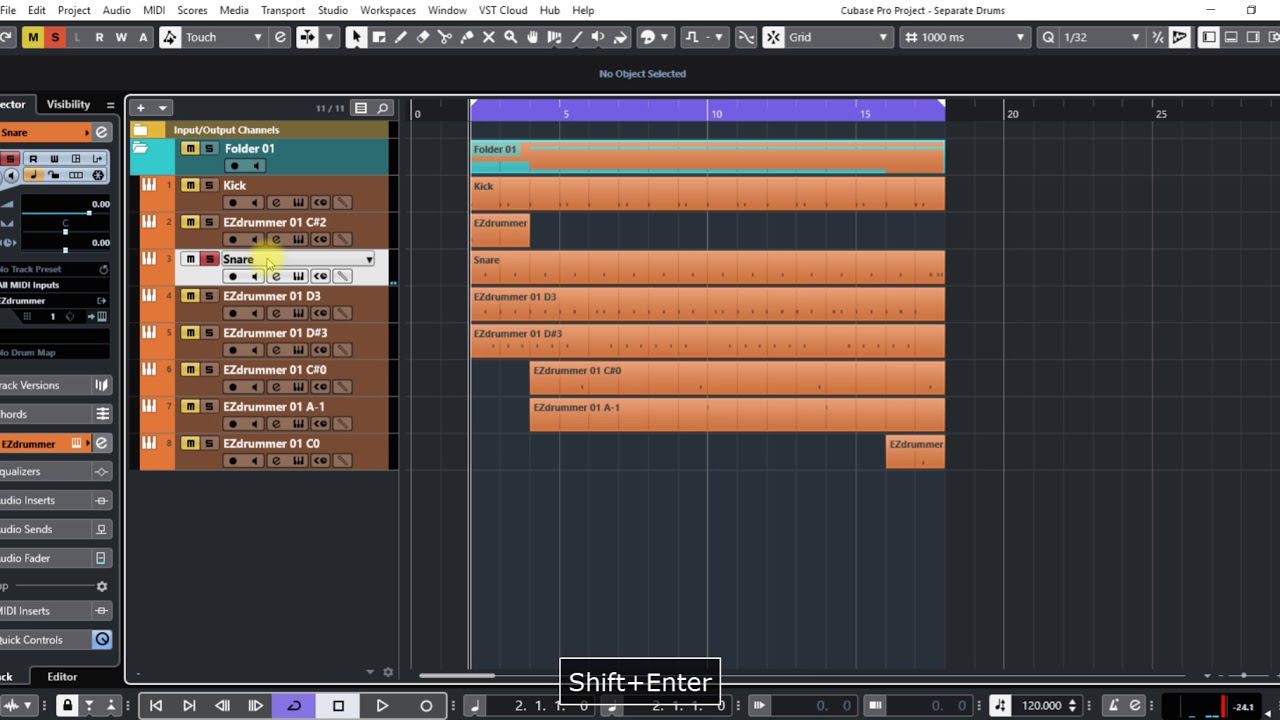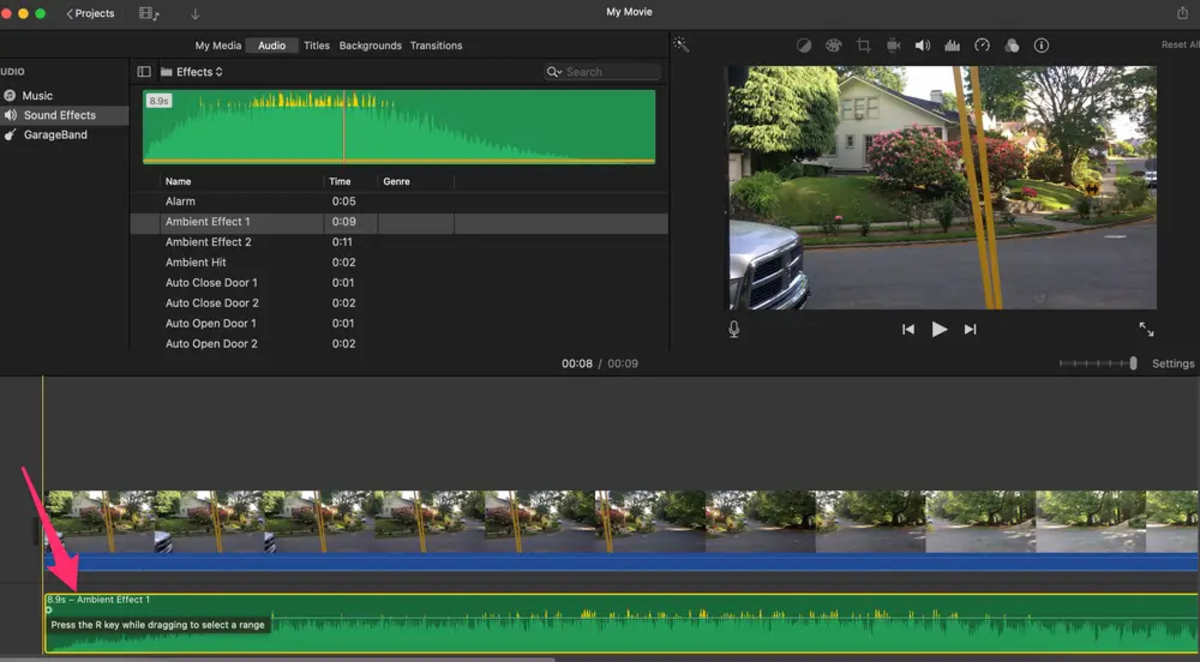Home>Production & Technology>Songwriter>How To Cite A Song When Songwriter Is Separate


Songwriter
How To Cite A Song When Songwriter Is Separate
Published: February 26, 2024
Learn how to cite a song when the songwriter is separate, including the proper format and citation style. Understand the essential guidelines for citing songwriter information.
(Many of the links in this article redirect to a specific reviewed product. Your purchase of these products through affiliate links helps to generate commission for AudioLover.com, at no extra cost. Learn more)
Table of Contents
Introduction
Citing a song is a crucial aspect of academic and professional writing, especially in fields such as musicology, literature, and journalism. When referencing a song in your work, it is essential to provide proper attribution to the songwriter. This not only acknowledges the creative contribution of the songwriter but also ensures the integrity of your own work.
Understanding how to cite a song becomes even more important when the songwriter is separate from the performer or when multiple individuals are involved in the songwriting process. This distinction adds complexity to the citation process, requiring a specific approach to accurately credit the original creators.
In this article, we will delve into the intricacies of citing a song when the songwriter is separate from the performer. We will explore the steps involved in properly citing such songs and provide examples to illustrate the citation format. By the end of this article, you will have a comprehensive understanding of how to cite songs with separate songwriters, empowering you to accurately and ethically reference these creative works in your own writing.
Understanding the Basics of Citing a Song
Citing a song involves acknowledging the original creators and providing attribution to their work within your own writing. This process is essential for maintaining academic and professional integrity, as well as respecting the intellectual property rights of the songwriters. When citing a song, it is crucial to include specific details such as the songwriter's name, the song title, the performer, the album or publication where the song appears, and the release year. These details collectively form a comprehensive citation that allows readers to locate and verify the referenced song.
In academic and research contexts, citing songs is common in disciplines such as musicology, ethnomusicology, literature, and cultural studies. Additionally, journalists and writers often reference songs in articles, reviews, and feature pieces. Proper citation not only acknowledges the creative contributions of the songwriters but also adds credibility to the author's work by demonstrating thorough research and accurate referencing.
Understanding the basics of citing a song involves recognizing the distinction between the songwriter and the performer. In many cases, the songwriter and the performer may be the same individual or part of the same musical group. However, there are instances where the songwriter is separate from the performer, leading to specific considerations when creating the citation. Furthermore, the collaborative nature of songwriting may involve multiple individuals contributing to the creation of a song, each deserving recognition in the citation.
As such, citing a song with separate songwriters requires attention to detail and adherence to established citation styles such as the Modern Language Association (MLA), American Psychological Association (APA), or Chicago Manual of Style. These style guides provide specific formats for citing songs, ensuring consistency and accuracy across academic and professional writing.
In the following sections, we will explore the nuances of citing songs when the songwriter is separate from the performer, providing clear guidelines and examples to facilitate the proper referencing of these creative works. Understanding these fundamentals will equip writers, researchers, and music enthusiasts with the knowledge to cite songs effectively and ethically in their respective fields.
Citing a Song When the Songwriter Is Separate
When the songwriter is separate from the performer or when multiple individuals are involved in the songwriting process, citing the song requires a nuanced approach to accurately attribute creative contributions. This distinction is common in the music industry, where songwriters may collaborate with performers or other songwriters to create a song. In such cases, it is essential to recognize the specific roles of each contributor and properly credit their contributions in the citation.
The separation of the songwriter from the performer introduces complexities in the citation process, as it necessitates clear identification of the original creators. This distinction is crucial for acknowledging the creative input of the songwriters and ensuring that their work is accurately represented in academic, professional, and journalistic contexts.
When citing a song with separate songwriters, it is imperative to include the names of all relevant contributors, particularly the primary songwriter or songwriters. Additionally, providing the performer's name, the song title, the album or publication where the song appears, and the release year remains essential for constructing a comprehensive and accurate citation.
Furthermore, understanding the specific roles of the contributors is vital in creating a precise citation. For example, if the performer is distinct from the songwriter, their respective roles should be clearly delineated in the citation to avoid ambiguity and provide transparent recognition of each individual's creative input.
In academic writing, citing songs with separate songwriters aligns with the principles of academic integrity and ethical scholarship. By acknowledging the distinct roles of the songwriter and the performer, writers uphold the standards of accurate referencing and demonstrate a comprehensive understanding of the song's creative genesis.
Moreover, in professional contexts such as journalism and music criticism, citing songs with separate songwriters contributes to the credibility and professionalism of the writer's work. It showcases a thorough understanding of the music industry's collaborative nature and highlights the significance of crediting all contributors involved in the songwriting process.
In the subsequent sections, we will delve into the specific steps involved in properly citing songs with separate songwriters, providing clear guidelines and examples to facilitate accurate and ethical referencing of these creative works. Understanding the intricacies of citing songs with separate songwriters empowers writers, researchers, and music enthusiasts to navigate the complexities of song attribution with precision and integrity.
Steps to Properly Cite a Song with Separate Songwriter
-
Identify the Songwriter(s) and Performer: Begin by identifying the primary songwriter(s) and the performer of the song. This information is essential for constructing an accurate citation that properly attributes creative contributions. If there are multiple songwriters, determine their respective roles in the songwriting process, such as lyrics, melody, or arrangement.
-
Format the Song Title and Performer's Name: When citing the song, format the title in a way that distinguishes it from the performer's name. Typically, the song title is enclosed in quotation marks, while the performer's name is italicized or underlined, depending on the citation style guide being followed.
-
Include the Songwriting Credits: List the names of the songwriter(s) in the citation, ensuring that each individual receives proper credit for their creative contributions. If the songwriter is separate from the performer, clearly indicate this distinction in the citation to avoid ambiguity.
-
Provide Album or Publication Information: Include details about the album, soundtrack, or publication where the song appears. This information helps readers locate the referenced song and provides context for its release. Specify the album title, publication name, release year, and any other relevant publication details.
-
Follow the Appropriate Citation Style: Adhere to the guidelines of the relevant citation style, such as MLA, APA, or Chicago Manual of Style, to ensure consistency and accuracy in the citation format. Each style guide may have specific requirements for citing songs with separate songwriters, including the placement of names, punctuation, and formatting of publication details.
-
Verify the Accuracy of Information: Double-check the accuracy of all details included in the citation, such as songwriter names, song title, performer's name, and publication information. Ensuring the correctness of these details is crucial for maintaining the integrity of the citation and facilitating proper attribution of the original creators.
-
Consider Collaborative Contributions: If the songwriting process involved collaboration among multiple individuals, acknowledge the collaborative nature of the work in the citation. Clearly delineate the roles of each contributor, recognizing their respective creative input in the creation of the song.
-
Review and Revise the Citation: After constructing the initial citation, review it for completeness and accuracy. Revise any discrepancies or formatting errors to ensure that the citation effectively represents the song and properly attributes the contributions of the songwriter(s) and performer.
By following these steps, writers can accurately and ethically cite songs with separate songwriters, acknowledging the collaborative efforts that contribute to the richness and diversity of musical creativity.
Examples of Citations for Songs with Separate Songwriters
Citing songs with separate songwriters requires precision and attention to detail to ensure that the original creators are appropriately credited. The following examples illustrate how to construct citations for songs with separate songwriters, incorporating the specific roles of the songwriter(s) and the performer, as well as the necessary publication details.
Example 1: MLA Style
Song Title: "Time After Time"
Primary Songwriter: Cyndi Lauper
Performer: Cyndi Lauper
Co-Songwriter: Rob Hyman
Album: She's So Unusual
Release Year: 1983
Citation:
Lauper, Cyndi, and Rob Hyman. "Time After Time." She's So Unusual, 1983.
In this example, the primary songwriter, Cyndi Lauper, and co-songwriter, Rob Hyman, are both credited for their contributions to the song "Time After Time." The performer, Cyndi Lauper, is also acknowledged in the citation. The song title is enclosed in quotation marks, while the album title is italicized. The publication details, including the album title and release year, provide context for the song's availability.
Example 2: APA Style
Song Title: "Yesterday"
Primary Songwriter: John Lennon
Performer: The Beatles
Co-Songwriter: Paul McCartney
Album: Help!
Release Year: 1965
Citation:
Lennon, J., & McCartney, P. (1965). Yesterday. Help!
In this APA-style citation, the primary songwriter, John Lennon, and co-songwriter, Paul McCartney, are listed with their initials and surnames. The performer, The Beatles, is also included in the citation. The song title is not enclosed in quotation marks, and the album title is italicized. The publication details are presented in a format consistent with APA guidelines.
Example 3: Chicago Manual of Style
Song Title: "Eleanor Rigby"
Primary Songwriter: Paul McCartney
Performer: The Beatles
Co-Songwriter: John Lennon
Album: Revolver
Release Year: 1966
Citation:
McCartney, Paul, and John Lennon. "Eleanor Rigby." Revolver. 1966.
In this example following the Chicago Manual of Style, the primary and co-songwriters, Paul McCartney and John Lennon, are listed with their full names. The song title is enclosed in quotation marks, and the album title is italicized. The publication details, including the release year, are presented in a manner consistent with the Chicago Manual of Style guidelines.
These examples demonstrate the nuanced approach to citing songs with separate songwriters, ensuring that all contributors are appropriately recognized within the citation. By following the specific formatting and publication details outlined in the respective citation styles, writers can accurately attribute the creative contributions of the songwriters and performers, enhancing the integrity of their own work.
Conclusion
Properly citing a song with separate songwriters is a critical aspect of academic and professional writing, ensuring that the creative contributions of the original creators are accurately recognized and attributed. Throughout this article, we have explored the complexities and nuances involved in citing songs when the songwriter is separate from the performer, providing clear guidelines and examples to facilitate accurate and ethical referencing of these creative works.
By understanding the specific steps to properly cite a song with separate songwriters, writers, researchers, and music enthusiasts can navigate the intricacies of song attribution with precision and integrity. Identifying the songwriter(s) and performer, formatting the song title and performer's name, including the songwriting credits, providing album or publication information, following the appropriate citation style, verifying the accuracy of information, acknowledging collaborative contributions, and reviewing and revising the citation are essential steps in constructing a comprehensive and accurate citation for songs with separate songwriters.
Furthermore, the examples of citations presented in MLA, APA, and Chicago Manual of Style demonstrate the application of specific formatting and publication details in accordance with the respective citation styles. These examples serve as valuable references for writers seeking to cite songs with separate songwriters in various academic and professional contexts, ensuring consistency and accuracy in their citations.
Citing songs with separate songwriters aligns with the principles of academic integrity, ethical scholarship, and professional credibility. By acknowledging the distinct roles of the songwriter and the performer, writers uphold the standards of accurate referencing and demonstrate a comprehensive understanding of the collaborative nature of songwriting. This practice contributes to the richness and diversity of musical creativity, showcasing a deep appreciation for the multifaceted contributions that shape the landscape of music.
In conclusion, the ability to properly cite songs with separate songwriters empowers writers, researchers, and music enthusiasts to engage with music in a scholarly and ethical manner, honoring the creative efforts of the original creators. By following the guidelines outlined in this article and adhering to the specific requirements of established citation styles, individuals can effectively reference songs with separate songwriters, contributing to the preservation and celebration of musical artistry in academic, professional, and journalistic discourse.











